

NEW JERSEY
Pine Barrens

1 of 4


NEW JERSEY
Pine Barrens


1 of 4
Travel half an hour from my house and you enter the Pine Barrens, a million acres of forest, swamps, and sandy
terrain, the largest stretch of open space along the eastern seaboard between Washington, D.C. and Boston.
Most frequently-seen herps are Fence Lizards, frogs, toads, and an assortment of turtles.
This Painted had unusually serrated scutes at the front of its carapace (top shell) and plastron (bottom shell).
Compare to the more normal scutes of the turtle above.
.
In early summer it’s not unusual to find pond turtles along the sandy roads. Females emerge from the water
searching for a dry, open spot to lay their eggs, a place with soft soil warmed by the sun. Such chance encounters on
land provide a rare opportunity for close-ups of shy aquatic turtles, typically seen only from a distance before they
dive and disappear.
Red-bellied Turtles frequently lay their eggs on the levees of abandoned cranberry bogs that have turned to
lakes, providing the deeper water these turtles prefer.
Baby Red-bellieds look nothing like the adults. They have a light green carapace laced with intricate yellow
lines, similar to other members of their genus, the closely related Cooters.
Red-bellieds, however, lose those patterns as adults, the top shell becoming solid black, like this juvenile that still
has yellow pinstripes on its neck, but no more lines on its back.
Multiple turtles climbed this berm to dig their nests. Most of the tracks are probably from Red-bellieds, but one
on the left shows a clear drag mark from a heavy tail, the distinct signature of a Snapping Turtle.
Painted Turtles also lay their eggs wherever they find sand near the bogs, as do the non-native Red-eared Sliders.

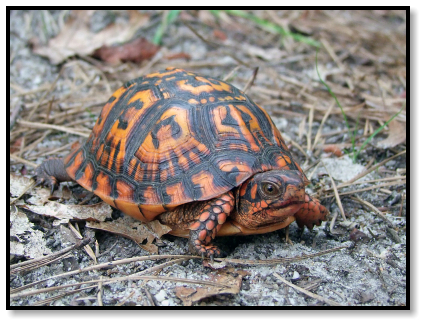
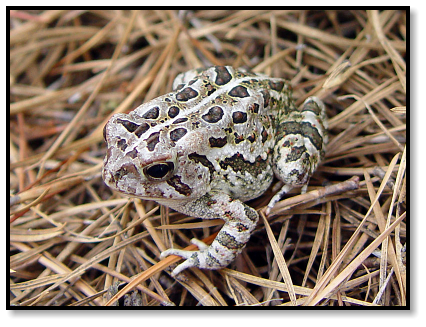

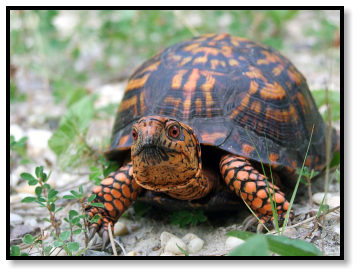
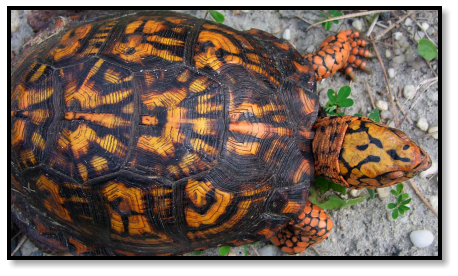
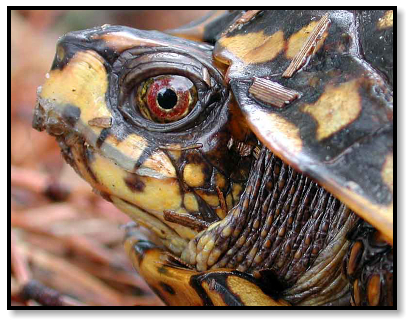
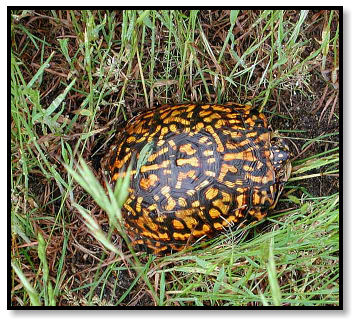
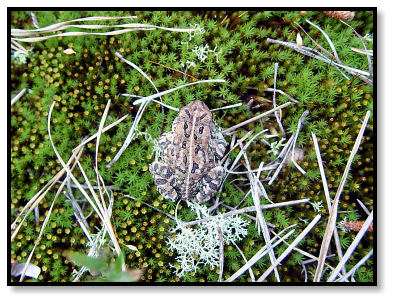
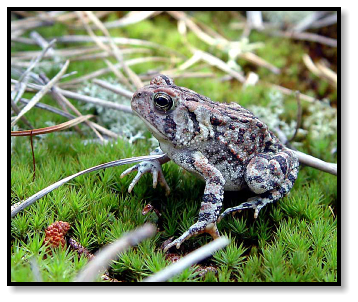
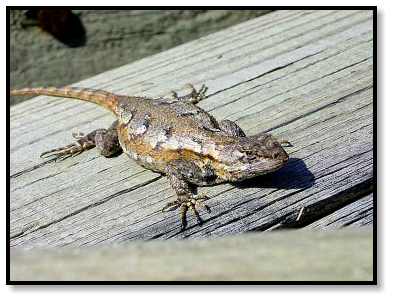
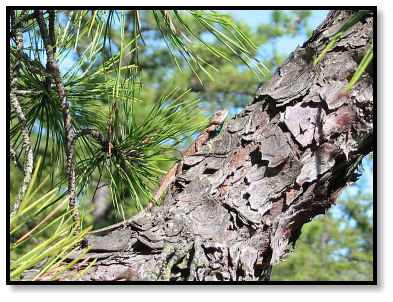
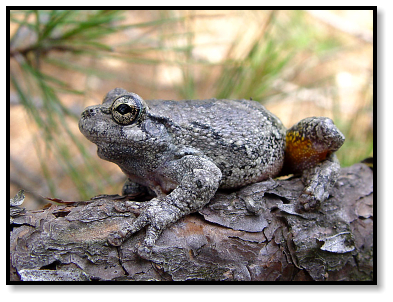

Eastern Fence Lizard
Sceloporus undulatus
Gray Tree Frog
Hyla versicolor
Fowler’s Toad
Bufo fowleri
Eastern Box Turtle
Terrapene carolina carolina

© Harvey Bird

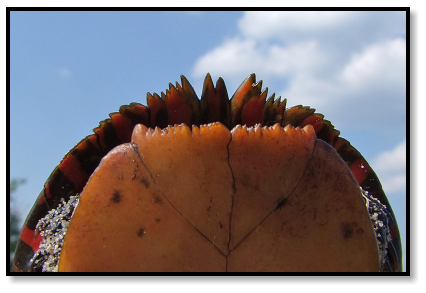



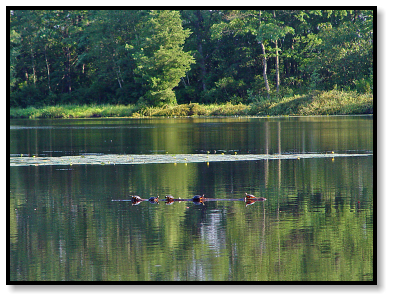
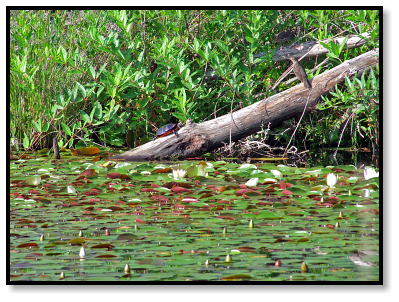

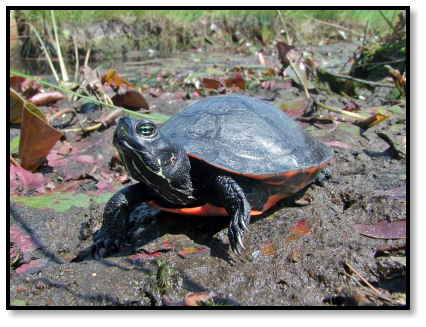
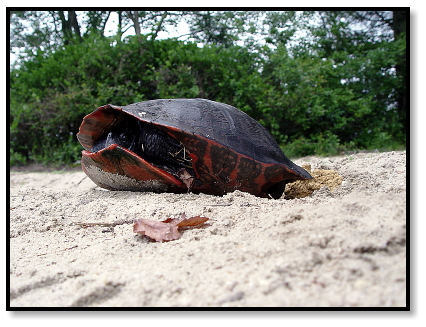
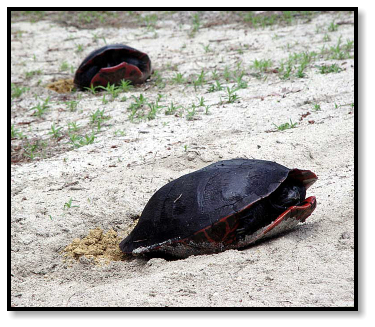
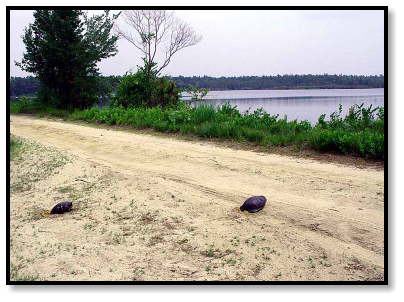
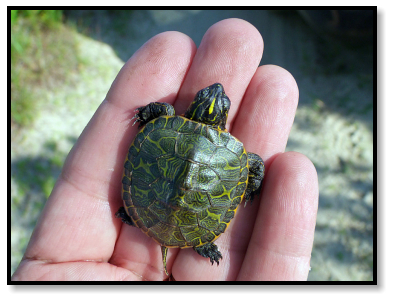
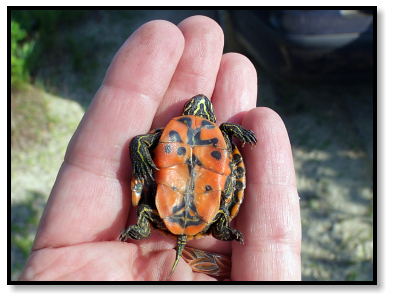
Eastern Painted Turtle
Chrysemys picta
Red-bellied Turtle
Psuedemys rubriventris
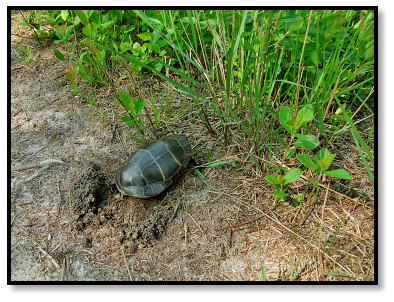
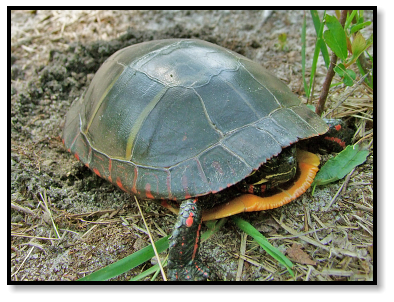


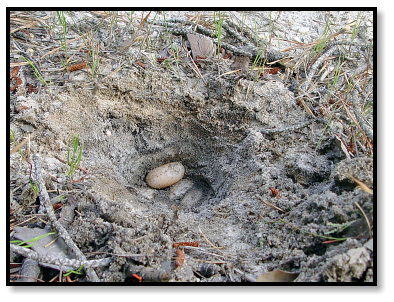

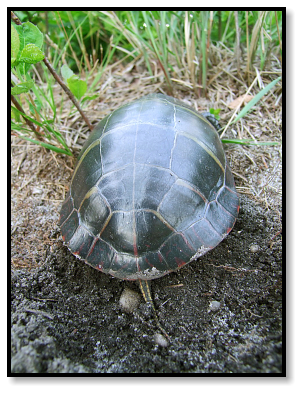
Red-Eared Slider
Trachemys scripta elegans







